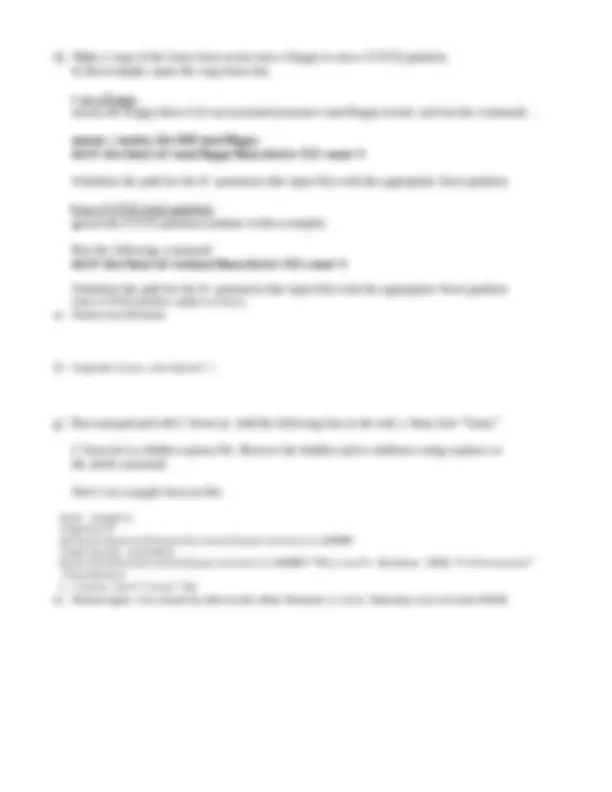



Study with the several resources on Docsity

Earn points by helping other students or get them with a premium plan


Prepare for your exams
Study with the several resources on Docsity

Earn points to download
Earn points by helping other students or get them with a premium plan
Community
Ask the community for help and clear up your study doubts
Discover the best universities in your country according to Docsity users
Free resources
Download our free guides on studying techniques, anxiety management strategies, and thesis advice from Docsity tutors
The steps to dual-boot linux and windows using grub, focusing on the requirements for the /boot partition, shrinking the windows partition, and the installation process. It covers the use of tools like fips, parted, and grub, as well as creating a bootable floppy or fat32 partition.
Typology: Study notes
1 / 3

This page cannot be seen from the preview
Don't miss anything!


The location of the /boot partition on the hard drive is critical so that you don't get hit by the infamous
way to avoid the BIOS 1024 limit is to create /boot within the first 1024 cylinders (~8.5 GB) of the hard drive. a) If you have multiple hard drives (disks) , /boot must be on the same hard drive (probably the first hard drive) that has the Windows boot loader (NTLDR) on the MBR. To do so shrink the Windows partition such that there is 200 MB of unused disk space at the beginning of the drive or after the Windows partition within the 1024-cylinder limit.
use LBA, your BIOS must support it. In addition, for LILO, you must also add a flag to enable LBA
The tool that comes with Red Hat, Disk Druid, does not have the ability to shrink existing partitions. Once you've shrunk the Windows partition, you can use Disk Druid during the Red Hat Installation to create all the partitions you need for Linux
Example:
#boot=/dev/hda default= timeout= splashimage=(hd0,1)/grub/splash.xpm.gz title Red Hat Linux (2.4.7-10) root (hd0,1) kernel /vmlinuz-2.4.7-10 ro root=/dev/hda3 hdc=ide-scsi initrd /initrd-2.4.7-10.img title Windows 2000 rootnoverify (hd0,0) chainloader +